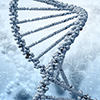Aging and Ichthyosis
What to Know as You Grow Older
Overview
People with ichthyosis are living longer, healthier lives than ever before. As we age, our skin—and the rest of our body—changes naturally. For those with ichthyosis, these changes can affect skin care routines, comfort, and health in unique ways. Understanding how aging interacts with ichthyosis can help you stay proactive, comfortable, and confident
.________________________________________
Skin Changes with Age
As we get older, everyone’s skin becomes thinner, drier, and less elastic. In ichthyosis, this may mean:
- Increased dryness or scaling, especially if moisture retention decreases.
- Slower skin turnover, leading to thicker buildup in some areas.
- Changes in color or texture—patches may appear lighter or darker.
- More sensitivity to temperature, friction, or certain products.
Tip: Regular gentle exfoliation and consistent moisturizing remain key—but the products or frequency that worked in your 20s may need adjustment as you age
.________________________________________
Medical Considerations
Older adults with ichthyosis may face additional challenges:
- Itch and discomfort can worsen due to drier air or medications.
- Increased risk of infection if skin becomes more fragile or cracks easily.
- Other health conditions (like diabetes or arthritis) may complicate skin care routines.
- Vision or mobility issues can make applying creams or bathing more difficult.
Ask your doctor or dermatologist about:
- Prescription topical treatments if over-the-counter products are less effective.
- Assistive tools (like lotion applicators for the back or long-handled brushes).
- Checking medication side effects that might worsen dryness.
________________________________________
Emotional Well-Being
With age may come new emotional challenges—such as frustration over changing routines, visible skin differences, or social isolation.
- Stay connected with peer support through FIRST’s community.
- Share experiences with others living with ichthyosis at different life stages.
- ? Seek counseling if changes in appearance or comfort affect mood or confidence.
________________________________________
Daily Living Tips
- Simplify routines: Use multi-step moisturizers (like creams with both exfoliating and hydrating ingredients).
- Hydrate well: Drinking water and using humidifiers helps your skin and comfort.
- Adjust environment: Avoid overly hot showers, harsh soaps, and low-humidity heating.
- Protect your skin: Loose, breathable clothing prevents irritation.
- Plan for flexibility: Adapt your regimen for travel, hospitalization, or mobility changes
.________________________________________
Resources & Support
- Educational resources
- Peer Navigator Program
- Medical & research updates
- National Institute on Aging – www.nia.nih.gov
- American Academy of Dermatology (AAD) – www.aad.org
________________________________________
Remember:
Aging with ichthyosis is a journey—your needs and your skin will evolve. With awareness, community, and care, you can continue to live comfortably and confidently at every stage of life
This Adult Toolkit Resource brought to you by:

Download/Print PDF Aging & Ichthyosis
This information is provided as a service to patients and parents of patients who have ichthyosis. It is not intended to supplement appropriate medical care, but instead to complement that care with guidance in practical issues facing patients and parents. Neither FIRST, its Board of Directors, Medical & Scientific Advisory Board, Board of Medical Editors, nor Foundation staff and officials endorse any treatments or products reported here. All issues pertaining to the care of patients with ichthyosis should be discussed with a dermatologist experienced in the treatment of their skin disorder.




